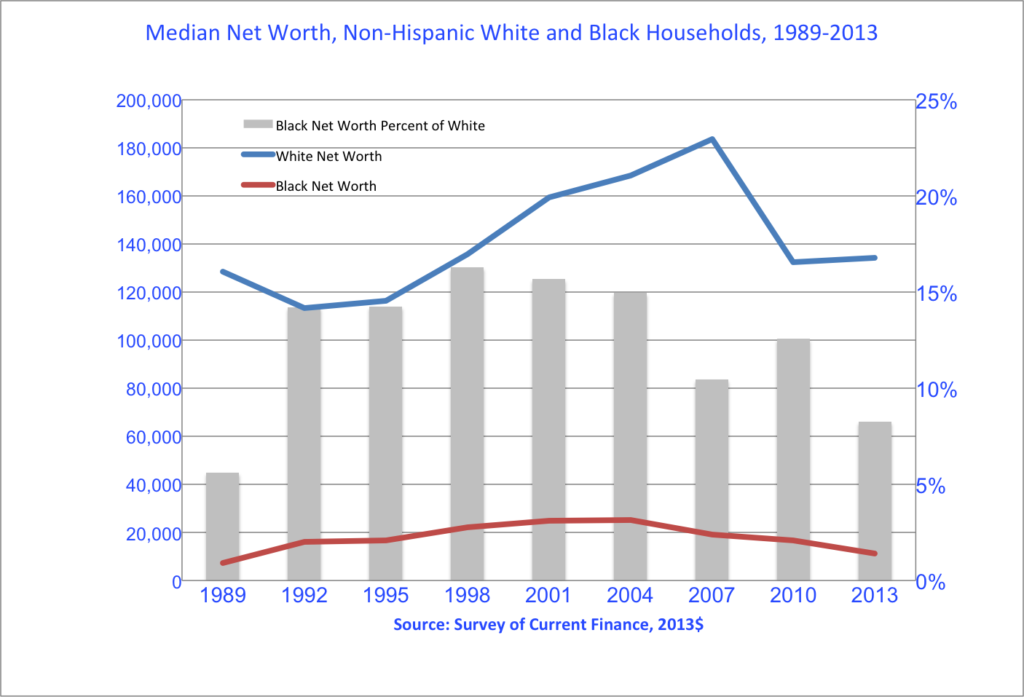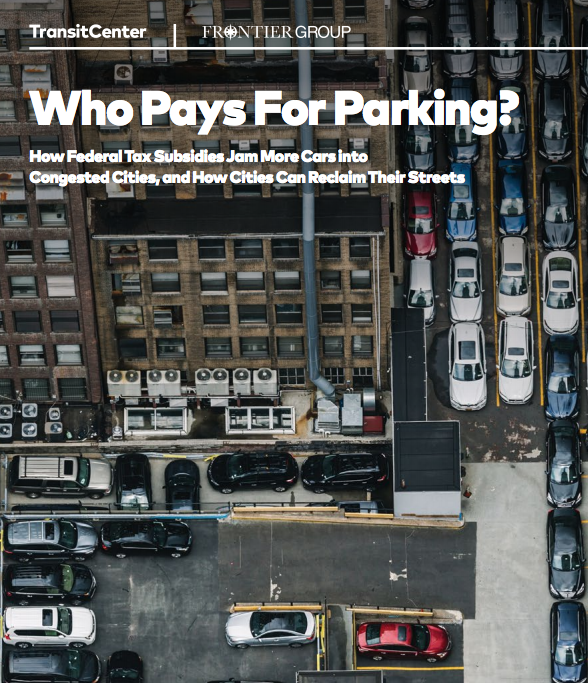What City Observatory did this week
1. What price autonomous vehicles? It’s easy to obsess about the cool technological details of autonomous vehicles: their sophisticated computers, LIDAR systems, and vehicle-to-vehicle communication. But for economists, the big variable determining their impact is likely to hinge on their price. There’s a wide range of speculation now about the prices that are likely to be charged for the per-trip use of autonomous vehicles operated as part of for-hire fleets. The cost might be as much as $1 per mile or as little as 15 cents. Where it falls in this range will have a big impact on car ownership, transit operators, and cities.
2. How housing widens racial wealth disparities. As The New York Times reported last week, Americans greatly misperceive the black-white wealth gap; we think that black wealth is as much as 80 percent that of whites, but actually its more like 5 percent. We dig deep into the multi-decade trends in the black-white wealth gap; it turns out that we were closing that gap noticeably during the 1990s, but that it opened up again since 2000. A key factor explaining the deterioration in relative black wealth: the housing market. Households of color were less well-positioned to gain in the housing bubble, and were more vulnerable in its collapse, which produced a 42 percent decline in black median wealth. Promoting more widespread homeownership turns out to be a lousy way to try to reduce the racial wealth gap.
Must read
1. You can build your way to housing affordability. It’s a commonly repeated shibboleth: you can’t build enough housing to address affordability. But Sightline Institute’s Alan Durning argues that oft-repeated claim is flat-out wrong. Creating conditions where more supply can be built materially lowers housing costs. Durning marshals examples from around the US and around the world of cities that have liberalized restrictions, especially on building up, and shows that these places have measurably lower housing costs.
2. You’ll never be homeless in America, if you’re a car. A trenchant observation from Patrick Clark at Bloomberg Business Week; the number of three car garages built in the US exceeds the number of one-bedroom apartments. Moreover, at a rough average of 1,000 square feet, they’re comparable in size. It speaks volumes about American priorities that we have policies that subsidize larger homes (and their car storage facilities) in suburbs, while we have a decided shortage of affordable rental housing in the nation’s cities.
New Research
The high cost of parking subsidies. Streetsblog has an excellent summary of a new report from the Transit Center addressing the costs and consequences of parking subsidies. Through the tax code, the federal government offers generous subsidies to those who commute by single occupancy vehicle to city centers. Parking expenses up to $255 per month are excludable from taxable income, a benefit that costs the federal government more than $7 billion a year. The subsidies are most valuable for high income workers in places where parking is most expensive: usually in the central business district of large cities. The subsidies have the perverse effect of encouraging more people to drive, clogging roads, and undercutting the fiscal viability of public transit. Based on research by Virginia Tech’s Andrea Hamre, the report estimates that in large cities like New York, Philadelphia and Washington, that the parking subsidy reduces transit’s market share of commute trips by about a quarter.
In the News
Planetizen nominated City Observatory Director Joe Cortright as one of the 100 most influential urbanists. He’s in good company, with everyone from Jane Jacobs and Richard Florida to Carol Coletta and Ed Glaeser. We’re honored to have City Observatory mentioned in the same breath with these giants of the field.
The Portland Tribune looked at local trends in city and suburban growth, and quoted Joe Cortright’s observations that cities like Portland have grown mostly in the past few years by taking up the slack in local housing supply, and as a result are bumping up against supply constraints in seeing further population growth.



